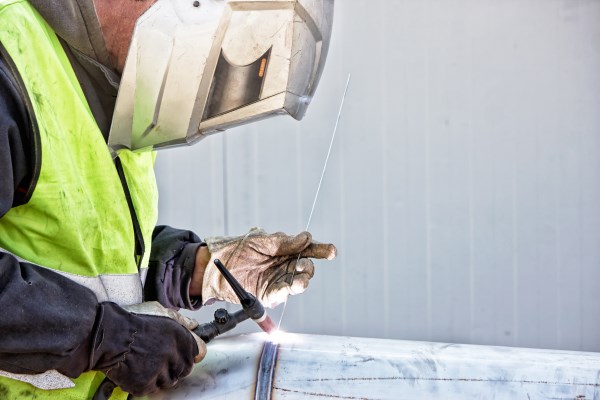
What Is TIG Welding?
The TIG (or Tungsten Inert Gas) welding process uses non-consumable tungsten electrode which passes the current to welding arc. This Tungsten Inert Gas Welding process is also known as Gas Tungsten Arc Welding or else by the first letters GTAW. The tungsten and other hot materials are protected by inert gas by the cooling effect. TIG welding process was first started in the year 1931 and was used during the times of World War II.
While the aerospace industry is one of the primary users of gas tungsten arc welding, the process is used in a number of other areas. Many industries use GTAW for welding thin workpieces, especially nonferrous metals. It is used extensively in the manufacture of space vehicles, and is also frequently employed to weld small-diameter, thin-wall tubing such as those used in the bicycle industry. In addition, GTAW is often used to make root or first-pass welds for piping of various sizes. In maintenance and repair work, the process is commonly used to repair tools and dies, especially components made of aluminum and magnesium.
Because the weld metal is not transferred directly across the electric arc like most open arc welding processes, a vast assortment of welding filler metal is available to the welding engineer. In fact, no other welding process permits the welding of so many alloys in so many product configurations. Filler metal alloys, such as elemental aluminum and chromium, can be lost through the electric arc from volatilization. This loss does not occur with the GTAW process. Because the resulting welds have the same chemical integrity as the original base metal or match the base metals more closely, GTAW welds are highly resistant to corrosion and cracking over long time periods, making GTAW the welding procedure of choice for critical operations like sealing spent nuclear fuel canisters before burial.
Around the world, structures made out of stainless steel have been TIG welded. TIG welding or GTAW welding is very complex and cannot be done by an ordinary worker, making these structures works of art. Welding stainless steel can be tricky because it is very good at retaining heat, and this can lead to problems such as warping, embrittlement, and rust. In fact, as little as five amps can make the difference between the perfect weld and a blued or burnt-through part.
At American Steel, our goal is to make sure you have the right equipment for the job. If your finished product is used for TIG welding, see us first, ensuring your steel meets the requirements of your clients.






